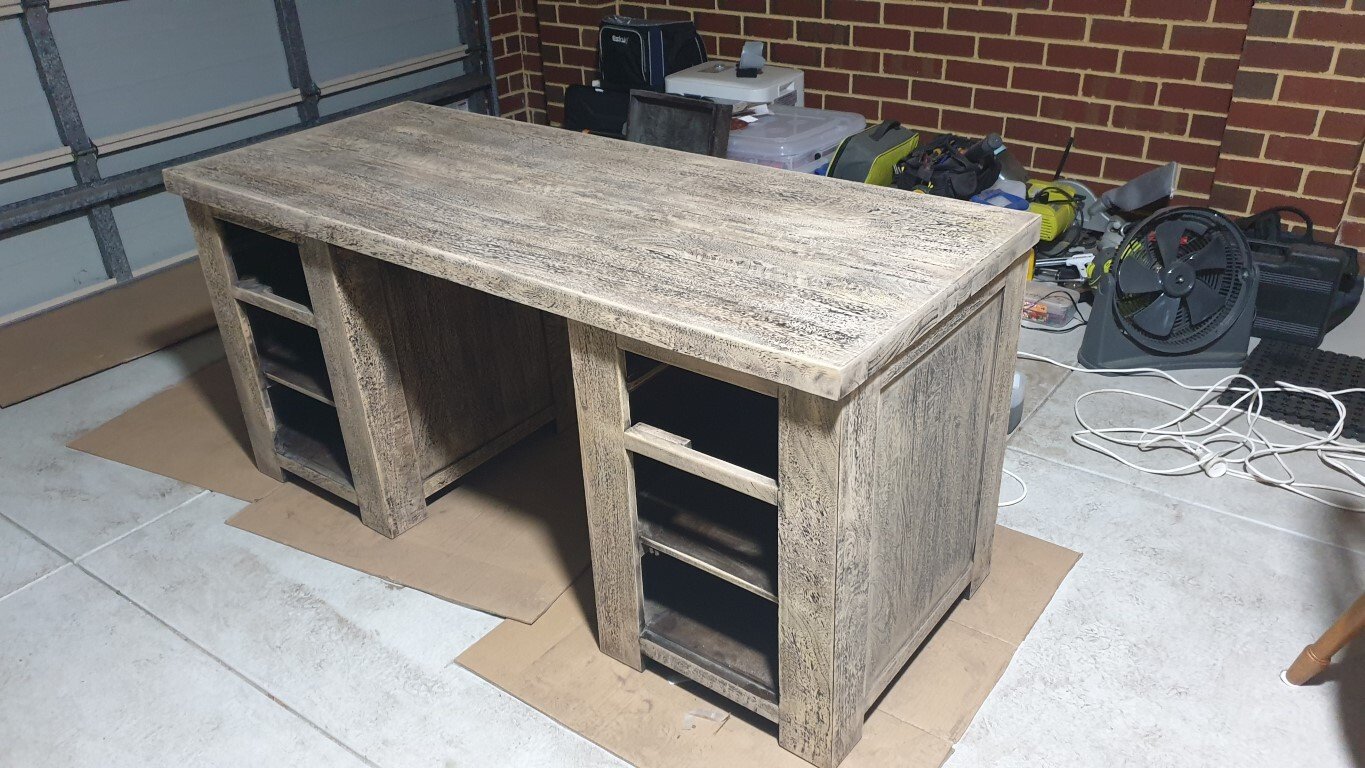this post was submitted on 08 May 2024
121 points (99.2% liked)
DIY
1251 readers
10 users here now
For DIY - this is also a placeholder.
founded 2 years ago
MODERATORS
you are viewing a single comment's thread
view the rest of the comments
view the rest of the comments





My thought was a full sheet. This math would drop a little due to actual dimensions and kerf, but I'm roughly thinking 30"x60" for the desktop. Then you've got an 18"x60" piece to make a modesty panel/back. That leaves 3'x4' from which I could cut two open boxes, roughly 12"x12"x18" that could be joined to the modesty panel to make open cabinets.
That leaves the 2x8 to cut glorified edge-banding and a couple of leg assemblies that only need to be 15"18" tall. There should be enough offcuts left to make some crude cable management and additional reinforcement.
Sounds like your plan would work and isn't too dissimilar. My only thought with using the 2x8s for legs is to make sure there's proper bracing so no potential for torsion or racking.
(I cheat and use shelving brackets, like $2 a pop on sale often)
Yeah, the idea would be something like THIS, with similar widths for the leg assemblies, though they'd be taller and I'd lift the front-to-back stretchers to give me four feet with a similar look, versus trying to get it perfectly flat. I think by giving the legs a bit of "chonk," they can be mounted securely enough to prevent racking, and there'd always be the possibility of a stretcher to connect the two assemblies, though I'd feel like I lost the game of BoM management if I had to buy a second board!
The other idea I liked would be something more like THIS, where the legs' assemblies are so thoroughly mated to the carcase that they really can't rack.
For joinery, probably something simple, some shallow rabbets for alignment, followed by a "glue and screw and through" method I've used before, where after the glue dries, you (one at a time) back out the screws and drill them out for glued 3/8" through-dowels. Not a subtle look, but intentional and nicer than the screws.